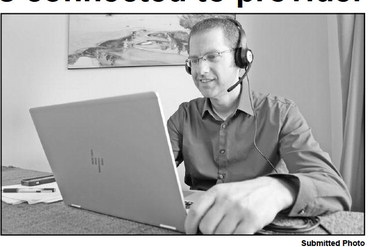Telehealth keeps patients connected to provider


It may seem a little science fiction-like, but modern medicine has progressed so much, that during the COVID-19 health emergency, patients can still be seen by their health provid...


It may seem a little science fiction-like, but modern medicine has progressed so much, that during the COVID-19 health emergency, patients can still be seen by their health provid...